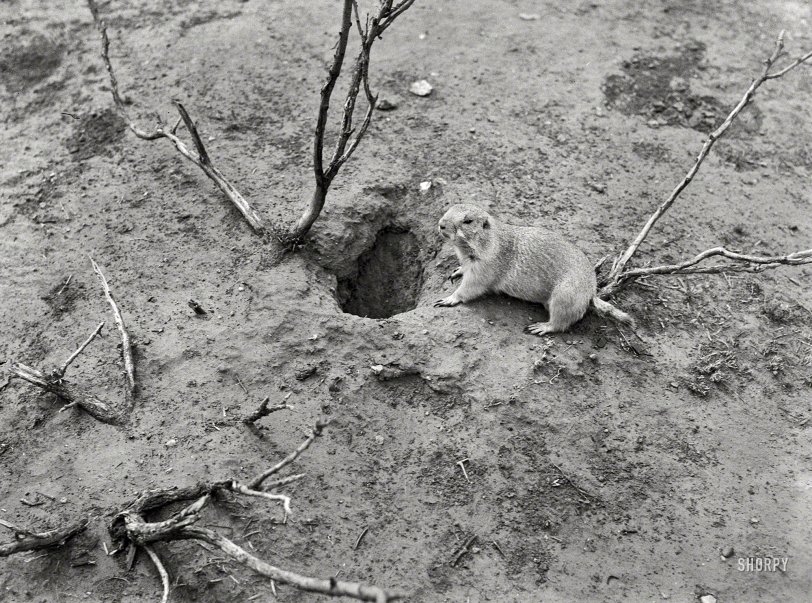


Framed or unframed, desk size to sofa size, printed by us in Arizona and Alabama since 2007. Explore now.
Shorpy is funded by you. Patreon contributors get an ad-free experience.
Learn more.

- Baldwin 62303
- Baldwin VO-1000
- Cold
- No expense spared
- Tough Guys
- Lost in Toyland
- And without gloves
- If I were a blindfolded time traveler
- Smoke Consumer Also Cooks
- Oh that stove!
- Possibly still there?
- What?!?
- $100 Reward
- Freeze Frame
- Texas Flyer wanted
- Just a Year Too Soon
- WWII -- Replacing men with women at the railroad crossing.
- Yes, Icing
- You kids drive me nuts!
- NOT An Easy Job
- I wonder
- Just add window boxes
- Icing Platform?
- Indiana Harbor Belt abides
- Freezing haze
- Corrections (for those who care)
- C&NW at Nelson
- Fallen Flags
- A dangerous job made worse
- Water Stop
Print Emporium
Groundhog Day: 1939

Classified as a marmot, the groundhog is a member of the squirrel family, Sciuridae, within the order Rodentia. Also called a woodchuck, it is considered basically a giant North American ground squirrel. -- Encyclopaedia Britannica
This little fellow, snapped circa 1939 by Jack Allison for the Farm Security Administration, didn't rate a caption, so we can't say for sure where he is other than his front porch. Whereas he used to live in a hole in the ground, his two-dimensional self now resides in the archives of the Library of Congress. View full size.
An abORIGINAL viewpoint....
Back in the 1930's and 40's my family were hunting and fishing guides in the Lake Superior region, continuing an aspect of our Ojibwe culture that gave me familiarity with most if not all wildlife of the area. We see a prairie dog, mishawashkojiish, and a groundhog, akakojiish, differently. An adult groundhog normally weighs about ten pounds and has dark fur and lives in a single family unit, whereas an adult prairie dog is half the weigh, about five pounds with light colour fir and tail markings while living in large communal colonies. We would not see a squirrel and a chipmunk as the same, therefore by similar reasoning, tis my opinion that the animal in the photo, by its obvious light coloring, small size, and particular markings on its tail is that of a prairie dog. Wayaaseshkang
Plague
When I was in the Badlands of South Dakota almost 10 years ago, I recall numerous signs warning us humans of the danger of contracting sylvatic plague from groundhogs. Turns out that there was indeed an infected colony. In general, groundhogs have fleas like most other mammals, but the chances of catching the plague from them is very low. I was intrigued, though, by the case five years ago of the 15-year-old boy from Kyrgyzstan who died after eating barbequed groundhog infected with bubonic plague. Downright medieval.
Correction: After reading Manidoogiizhig's informative piece (above): infected colony of prairie dogs, not groundhogs.
Depression Dog
I live in Pennsylvania, and that little fellow looks decidedly unlike any woodchuck I've ever seen.
More like some wannabe Western version. He looks like his great-grandfather was a prairie dog and married a woodchuck from back East. Either that, or the Depression hit woodchucks harder than I thought.
























On Shorpy:
Today’s Top 5